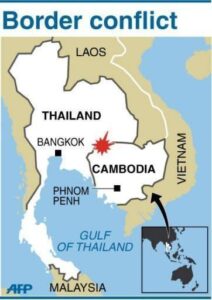Naxalism in India: Understanding the Origins, Impact, and the Government Response
Introduction
Naxalism, often referred to as Left-Wing Extremism (LWE), is a significant internal security challenge in India. Originating from a small village called Naxalbari in West Bengal in 1967, the movement started as a peasant uprising against oppressive landlords and socio-economic inequality. Over the decades, it evolved into a larger Maoist insurgency affecting multiple states, primarily in the “Red Corridor” of India.
This article explores the origins, evolution, key causes, regional spread, government initiatives, and current status of Naxalism in India. It also addresses common questions surrounding this complex socio-political issue.
What is Naxalism?
Naxalism is a far-left, radical communist movement that seeks to overthrow the Indian state through armed revolution, inspired by the ideologies of Mao Zedong. It originated when a faction of the Communist Party of India (Marxist) split and began promoting armed rebellion as a means to establish a classless society.
The movement gained traction in areas with high levels of poverty, land inequality, tribal exploitation, and lack of development, making it a socio-economic and security issue rolled into one.
Origins of Naxalism
Year of Origin: 1967
Place of Origin: Naxalbari, Darjeeling district, West Bengal
Founder: Charu Mazumdar, Kanu Sanyal, Jangal Santhal
Initial Objective: Redistribution of land and rights for landless peasants
The Naxalite movement quickly spread to other states such as Andhra Pradesh, Bihar, Odisha, Chhattisgarh, and Jharkhand—regions where tribal populations and economic backwardness are prevalent.
Causes of Naxalism in India
Land Alienation
Tribal and rural populations often lose land to industrial and mining projects without adequate compensation.Poverty and Unemployment
Lack of education and jobs drives youth toward extremist ideologies that promise justice and livelihood.Exploitation of Tribals (Adivasis)
Historical neglect and denial of rights have created deep resentment in tribal communities.Political and Administrative Vacuum
Remote areas often lack effective governance, law enforcement, and basic infrastructure.Inequality and Corruption
Widespread corruption in welfare schemes and skewed development add fuel to dissatisfaction.
Geographical Spread: The Red Corridor
The Red Corridor refers to a belt of Indian states where Naxalism has been historically active. These include:
Chhattisgarh
Jharkhand
Odisha
Maharashtra
Andhra Pradesh
Telangana
Bihar
West Bengal
Madhya Pradesh
Though the number of affected districts has reduced over the years, some core areas still remain vulnerable.
Impact of Naxalism on India
Security Threat
Armed Naxal groups target security forces, government officials, and infrastructure.Developmental Hindrance
Infrastructure projects, especially in interior tribal areas, are often delayed due to Naxal interference.Human Cost
Thousands of lives, including civilians, Naxals, and security personnel, have been lost since the movement began.Fear and Migration
Persistent violence leads to displacement and loss of livelihood for many rural families.
Government Response to Naxalism
Security Measures
Operation Green Hunt
A large-scale anti-Naxalite operation launched in 2009 using CRPF and state police forces.Deployment of Specialized Forces
Units like CoBRA (Commando Battalion for Resolute Action) have been trained for guerrilla warfare.
Developmental Initiatives
Integrated Action Plan (IAP)
Focuses on building roads, schools, healthcare, and employment in Naxal-affected areas.Aspirational Districts Programme
Targets backward districts with a focus on health, education, and infrastructure.Skill Development and Rehabilitation
Surrender and rehabilitation policies encourage Naxal cadres to return to mainstream society.
Technology and Intelligence
Use of drones, satellite mapping, and mobile connectivity to improve monitoring and reach.
Current Status of Naxalism in India (As of 2024)
Naxal-related violence and incidents have significantly declined over the last decade.
The number of Naxal-affected districts has been reduced from over 90 to around 45.
Government efforts in development, security, and rehabilitation have yielded positive results.
However, core regions in parts of Chhattisgarh, Odisha, and Jharkhand continue to witness sporadic violence.
Challenges in Tackling Naxalism
Difficult Terrain: Dense forests make counter-insurgency operations complex.
Local Support for Naxals: Due to mistrust in government systems, some tribal groups still support them.
Lack of Coordinated Policies: States differ in their approach and effectiveness in handling the issue.
Delays in Development: Infrastructure and services often do not reach the most remote areas.
The Way Forward
To eliminate Naxalism completely, a balanced approach of security operations and inclusive development is essential. Building trust with tribal communities, protecting their rights, ensuring transparency in land acquisition, and improving education and employment opportunities will help address the root causes of the movement.
Frequently Asked Questions (FAQs)
1. What is Naxalism?
Naxalism is an armed left-wing extremist movement in India that aims to overthrow the state through revolution, primarily advocating for the rights of the poor and landless.
2. How did Naxalism originate?
It began in 1967 in Naxalbari village, West Bengal, as a peasant uprising against feudal landlords.
3. What is the Red Corridor?
The Red Corridor refers to areas in India affected by Naxalism, including states like Chhattisgarh, Jharkhand, Odisha, and Bihar.
4. How is the government tackling Naxalism?
Through a combination of security measures, development programs, and rehabilitation schemes for surrendered Naxals.
5. What are the main causes of Naxalism?
Land disputes, poverty, unemployment, tribal exploitation, and lack of development are key drivers.
6. Has Naxalism declined in India?
Yes, both the geographical spread and intensity of violence have significantly declined in recent years.
7. What is Operation Green Hunt?
A major counter-insurgency operation launched in 2009 to combat Naxalism using security forces.
8. Can Naxalism be eradicated completely?
It is possible with sustained development, effective governance, community engagement, and robust law enforcement.






